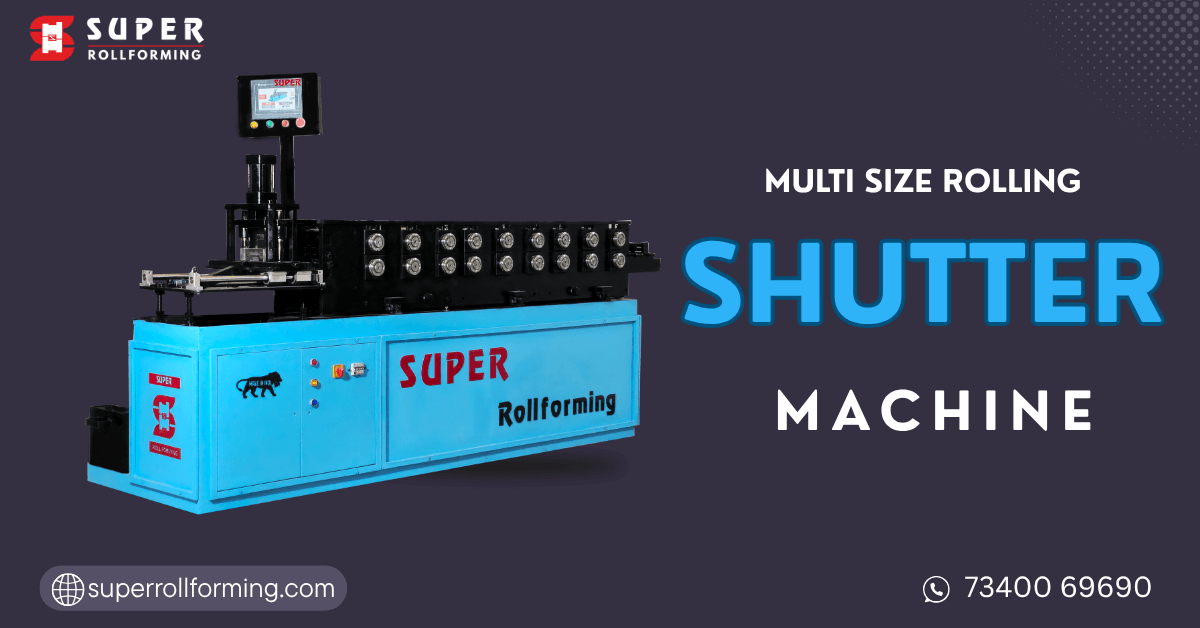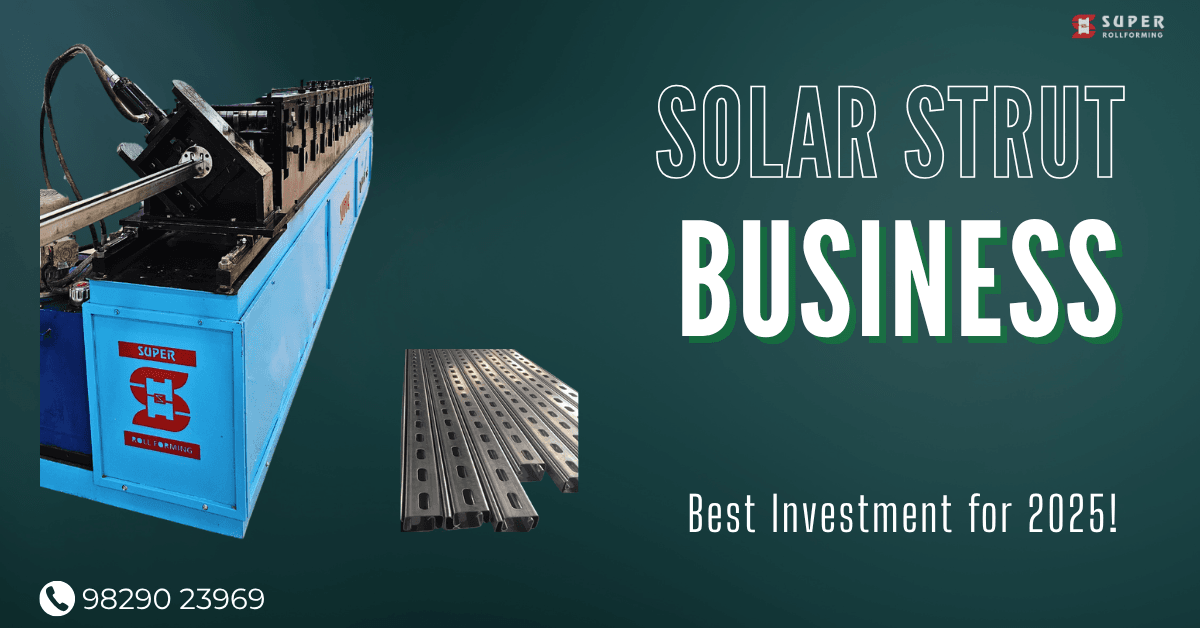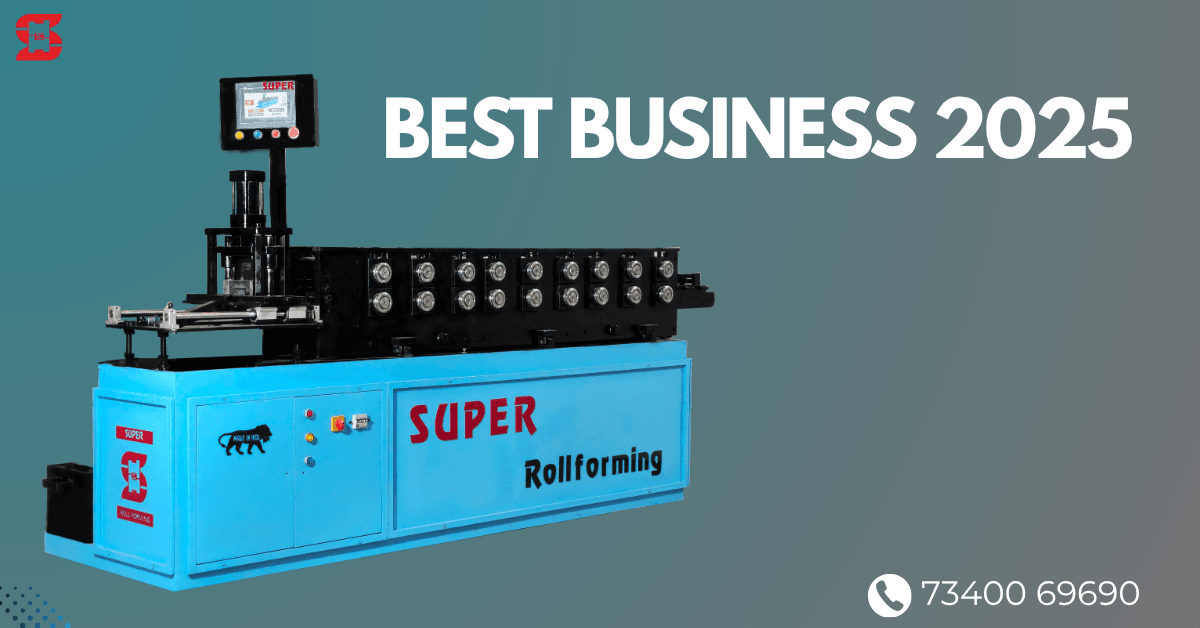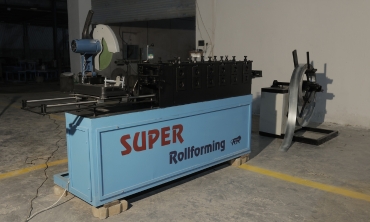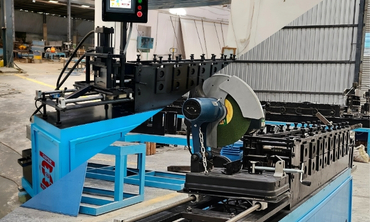Introduction
Choosing the right cutting mechanism in rolling shutter manufacturing plays a critical role in determining the efficiency, precision, and overall productivity of the business. Two popular options, manually operated chop saw cutting and hydraulic cutting, offer distinct advantages depending on the scale and needs of your operation. This article will examine these two cutting methods, discussing their respective benefits, drawbacks, and suitability for various business contexts. By the end, you’ll have a clearer understanding of which option aligns best with your manufacturing goals.
Key Differences Between Chop Saw and Hydraulic Cutting
What is Chop Saw Cutting?
Manually operated chop saw cutting is a straightforward method that involves using a high-speed saw to manually cut metal or other materials to specified lengths. This cutting process is typically used in smaller production environments where customization, hands-on operation, and budget control are key.
Benefits of Chop Saw Cutting:
- Cost-Effective: Lower upfront cost makes it accessible for small businesses.
- Flexibility: Suitable for different materials and allows for easy adjustments.
- Simple Maintenance: Basic parts reduce maintenance requirements.
Limitations of Chop Saw Cutting:
- Manual Labor: Requires skilled operators, increasing labor costs.
- Consistency Challenges: Manual operation may lead to inconsistencies.
- Time-Intensive: Slower in high-volume production compared to automated solutions.
What is Hydraulic Cutting?
Hydraulic cutting machines utilize hydraulic power to apply controlled force, making them suitable for high-precision and high-volume manufacturing. This automated system is designed for efficiency, reducing the need for manual intervention.
Benefits of Hydraulic Cutting:
- High Precision: Achieves clean, accurate cuts for uniform output.
- Time Efficiency: Automation reduces production time, ideal for large-scale operations.
- Enhanced Safety: Minimizes direct operator involvement, reducing risk of injury.
Limitations of Hydraulic Cutting:
- Higher Initial Investment: Requires significant upfront capital.
- Complex Maintenance: Hydraulic systems involve intricate components that may require specialized maintenance.
- Less Flexible: May be limited to specific materials and cut sizes without additional tools.
Comparative Analysis: Chop Saw Cutting vs. Hydraulic Cutting
Cost Efficiency
- Chop Saw Cutting: Ideal for businesses with limited budgets. The low initial investment makes chop saws accessible for small operations or startups.
- Hydraulic Cutting: Higher purchase and maintenance costs, though the machine’s durability and automation benefits can lead to cost savings over time for larger-scale operations.
Speed and Production Volume
- Chop Saw Cutting: Best suited for low-volume production. Manual operation slows down the process, making it challenging for high-volume demands.
- Hydraulic Cutting: Far more efficient for bulk production. The automated process drastically cuts down processing time, enabling faster order completion and reducing bottlenecks.
Precision and Quality of Cuts
- Chop Saw Cutting: Can produce accurate cuts, but variations are possible due to manual operation.
- Hydraulic Cutting: Superior for precision cutting, consistently producing exact dimensions without operator variability, ideal for applications requiring high consistency.
Maintenance and Operating Costs
- Chop Saw Cutting: Maintenance is generally simpler and less expensive, with minimal components needing replacement.
- Hydraulic Cutting: Although robust, hydraulic machines can incur higher maintenance costs and may require specialized care, impacting operating budgets.
Safety Considerations
- Chop Saw Cutting: Requires direct operator involvement, posing higher safety risks, particularly if the operator is inexperienced or fatigued.
- Hydraulic Cutting: Automation reduces operator contact, making it a safer option. Enhanced safety mechanisms in hydraulic systems further lower accident risks.
Best Applications for Each Cutting Method
Ideal Scenarios for Chop Saw Cutting
- Small-Scale Operations: Low production volumes where budget constraints are a concern.
- Customized Orders: Smaller batches requiring varied specifications, allowing the operator to easily adjust the saw for different materials or sizes.
- Lower Initial Budget: For businesses that cannot justify the high capital expenditure of hydraulic machines.
Ideal Scenarios for Hydraulic Cutting
- High-Volume Production: Large manufacturing operations with consistent orders benefit from the speed and efficiency of hydraulic cutting.
- Precision-Driven Projects: Industries requiring precise and consistent cuts across large volumes, such as automotive or heavy machinery.
- Increased Safety Standards: Settings where operator safety is paramount benefit from the minimal direct interaction offered by hydraulic systems.
Choosing the Right Cutting Mechanism for Your Business
When deciding between chop saw cutting and hydraulic cutting, consider the following factors:
- Production Volume Requirements: High-volume businesses benefit from hydraulic systems.
- Budget Constraints: Chop saws are cost-effective for smaller businesses.
- Material Consistency Needs: Hydraulic machines provide consistent cuts ideal for standardized production.
- Operator Skill Level: If your workforce is experienced, a manual chop saw may be feasible; otherwise, hydraulic options reduce dependency on skilled operators.
- Safety Priorities: Hydraulic cutting is preferable for enhancing workplace safety due to less manual handling.
Conclusion
The choice between manually operated chop saw cutting and hydraulic cutting in rolling shutter machines depends heavily on your business’s production needs, budget, and safety standards. Chop saw cutting is ideal for businesses that prioritize flexibility and cost-effectiveness, especially in low-volume production. Conversely, hydraulic cutting machines offer unmatched precision, efficiency, and safety for large-scale operations willing to invest in advanced technology. Evaluate these factors carefully to determine which cutting method best aligns with your rolling shutter manufacturing requirements.

